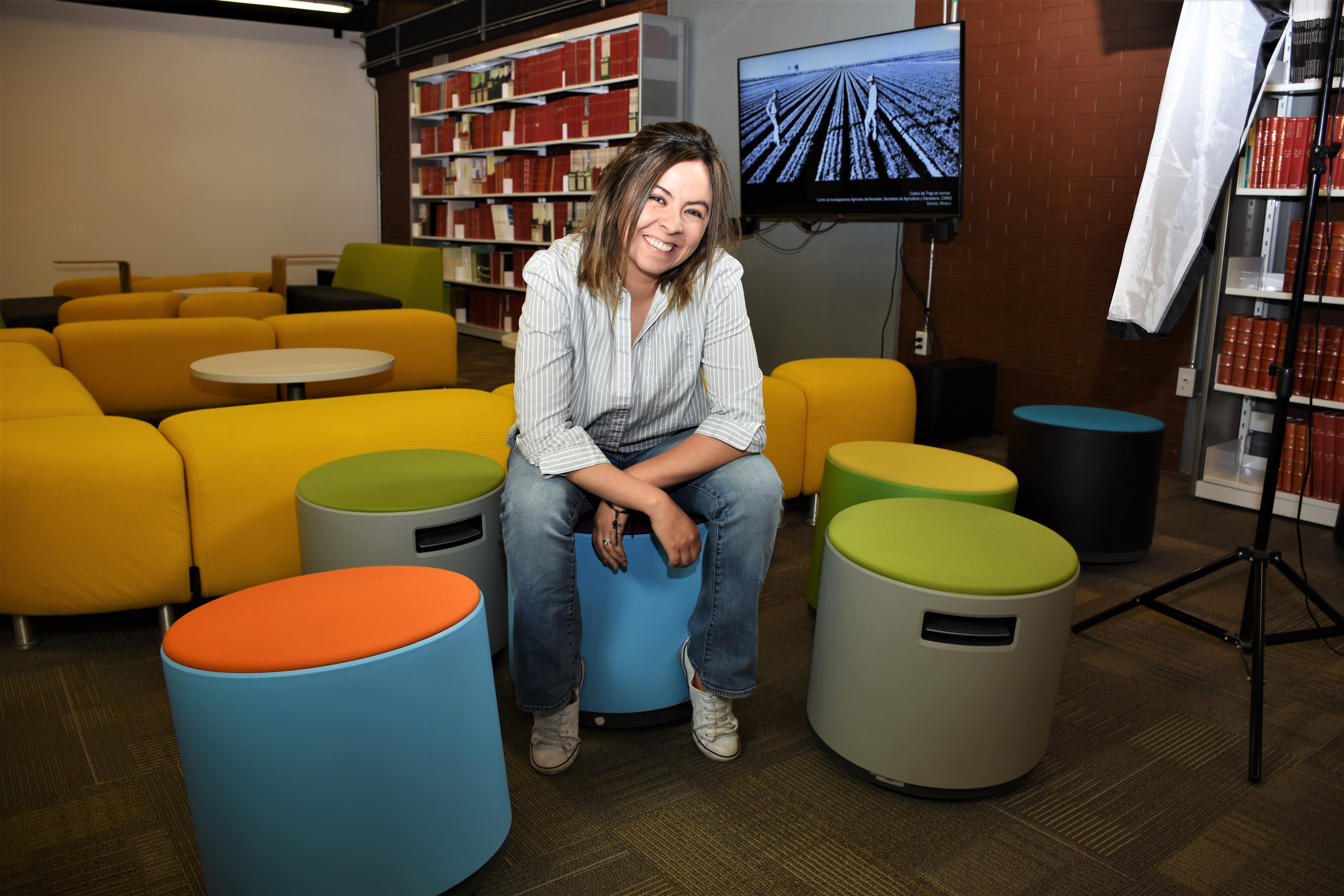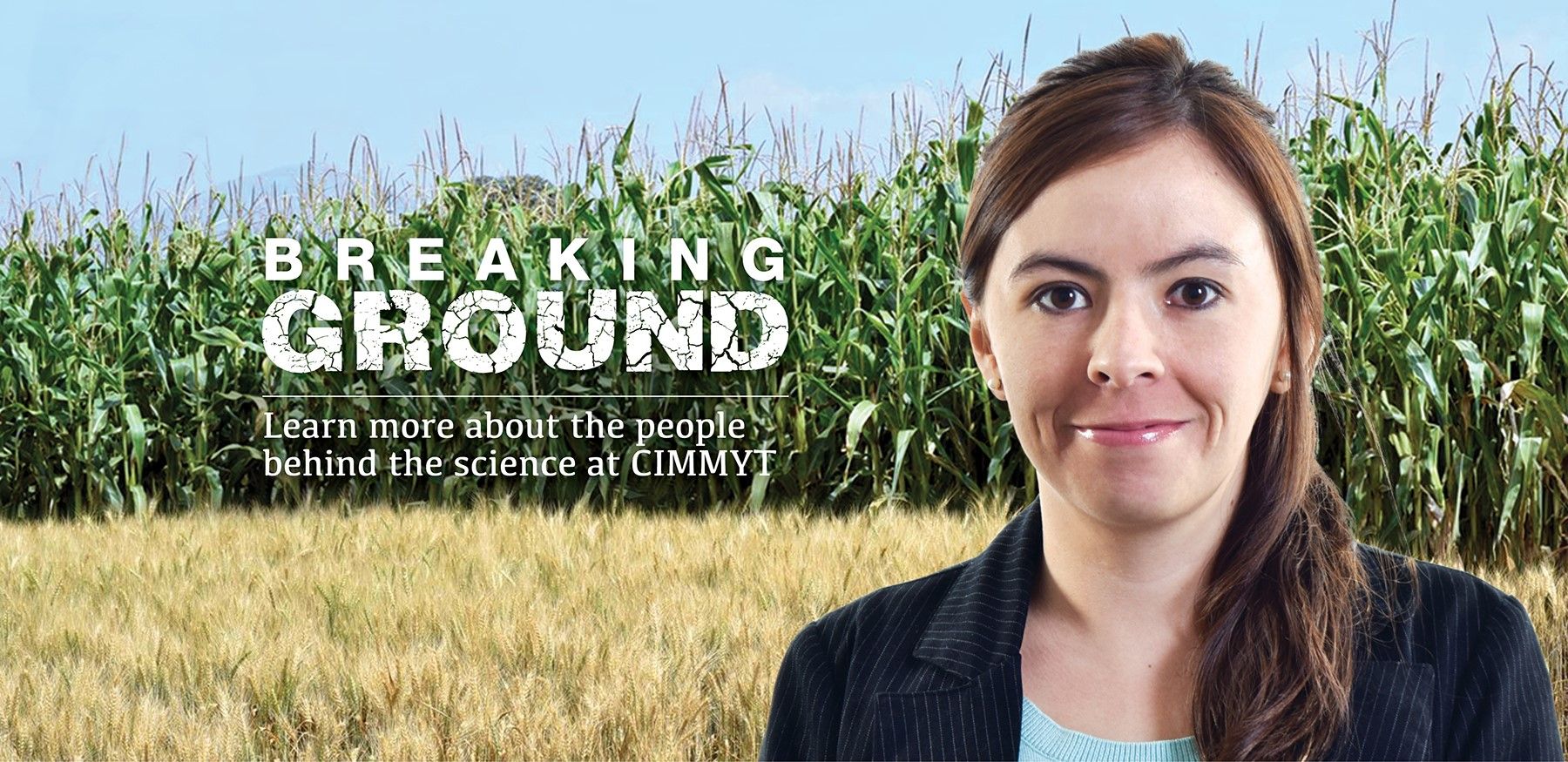Breaking Ground: Andrea Gardeazábal transforms data into meaningful information
Andrea Gardeazábal has many titles — Monitor, Evaluation and Learning Manager, ICT for Agriculture — but the core of what she does is knowledge management. She merges monitoring, evaluation, accountability and learning (MEAL) with information communication technologies (ICT) to transform data into something meaningful.
A political scientist by training, Gardeazábal knows the power of data and statistics. As she began working on ICT-for-development projects in the field, she observed a lack of understanding of ICT and how the development sector could take advantage of these tools.
“I knew this was progressing very fast; that this was the future. Everyone was talking about ICT and the future with the internet of things, and social media was just getting started,” she said. So she asked herself, how could the development sector take advantage of these new technologies?
Gardeazábal was working on projects bringing computers to rural areas in Colombia, which did not have internet connection or electricity. The problem could not be solved simply with a machine. She wanted to understand how to use ICT for development in a meaningful way. This triggered an interest in MEAL, to understand how ICT benefits the development sector, or does not, and to reintegrate that information into project design and impact.
After working in ICT for civil participation, education and microfinance, she joined CIMMYT with the mission to understand ICT for agriculture. Now she merges ICT tools with MEAL, leading the design, development and operation of systems for data collection, data cleaning, data analysis and data visualization with the Integrated Development program’s projects in Colombia, Guatemala and Mexico.
Ensuring intended results
Monitoring, learning, accountability and evaluation is crucial to ensure CIMMYT delivers on its objectives. Monitoring means ensuring that operations in the field are happening as planned. Rather than waiting until the end of the project when the donor asks for a report, Gardeazábal’s team monitors operations in the field on a quarterly or yearly basis. The team, both in the field and at headquarters, uses this data to check that the project is achieving what was intended and make interventions or adjustments if necessary.
Evaluation looks at project results and evidence. The team collects evidence for every single data point that they have, and then evaluates that evidence for impact and results in the field. This data is not only related to yield increase, but includes sustainable production, capacity development, and adequate technology adaptation and adoption processes.
Accountability is transparency with funders, so that everyone involved in a project is accountable for the processes, decisions and impact. CIMMYT is able to show progress through a transparent relationship with funders.
Learning happens after the team collects information, produces results evaluations, and understands what was done well and where the process had to be redirected. This information can then inform design of new projects or project phases. “We use the data and analysis of each project to redesign or modify our plans for the next project or even what kinds of projects we want to conduct,” Gardeazábal said.

What ICT can offer
In the past, a MEAL team would collect data from a representative sample at the start of the project, then go back to the office and analyze that data. At the end of the project, the team would complete the same exercise, to see the difference from what they gathered at the beginning.
With ICT tools, researchers are able to gather and analyze robust data more quickly and can communicate efficiently with the beneficiaries of a project throughout its course. Artificial intelligence and machine learning algorithms can help in understanding large sets of data so that this information can strengthen and streamline the MEAL process and project impact.
“We don’t need to wait until the end of the project for the results in the field or to have a sense of what the farmers are saying and achieving. We have a lot of tools, from the ICT side, that help make monitoring and evaluation more efficient,” Gardeazábal explained.
An international award recognized some of these ICT tools earlier this year. Gardeazábal formed part of the winning team with members from the Alliance of Bioversity International and CIAT and the International Institute for Applied Systems Analysis (IIASA) working on groundbreaking data systems and tools that help over 150,000 farmers in Mexico.
The team tracked over 500 variables over different farming plots and analyzed them with geographic, weather and market data to help identify the best management practices for each plot. This information — including historic yield potential, local benchmarks, windows of opportunity, recommended agricultural practices and commodity price forecasting — is available to farmers through an app called AgroTutor (Android, iOS).
The importance of an enabling environment
However, Gardeazábal cautions against the idea that technology on its own is going to end poverty or increase food security.
“ICT is a vehicle for innovation in agriculture. Just having an app in the field is not enough to generate the change that we are actually looking for. You need an enabling environment, a network, engagement of the farmers and the buy-in of scientists to take advantage of ICT tools.”
From drones and satellite imagery to artificial intelligence, ICT tools can help CIMMYT carry out its mission by streamlining the data gathering and analytics processes.
However, this work is not done in isolation from the environment surrounding it. CIMMYT does not only work on increasing yields, but also manages resources and local networks in efficient ways. Teams must monitor data on air quality, water use and efficient information flows, analyze this data, and then return to the field with recommendations for the most sustainable production within integrated agri-food systems.


